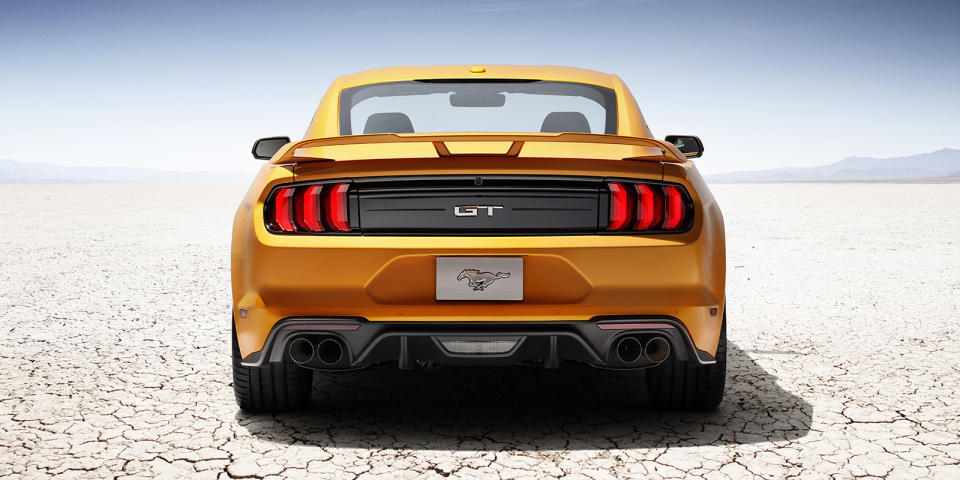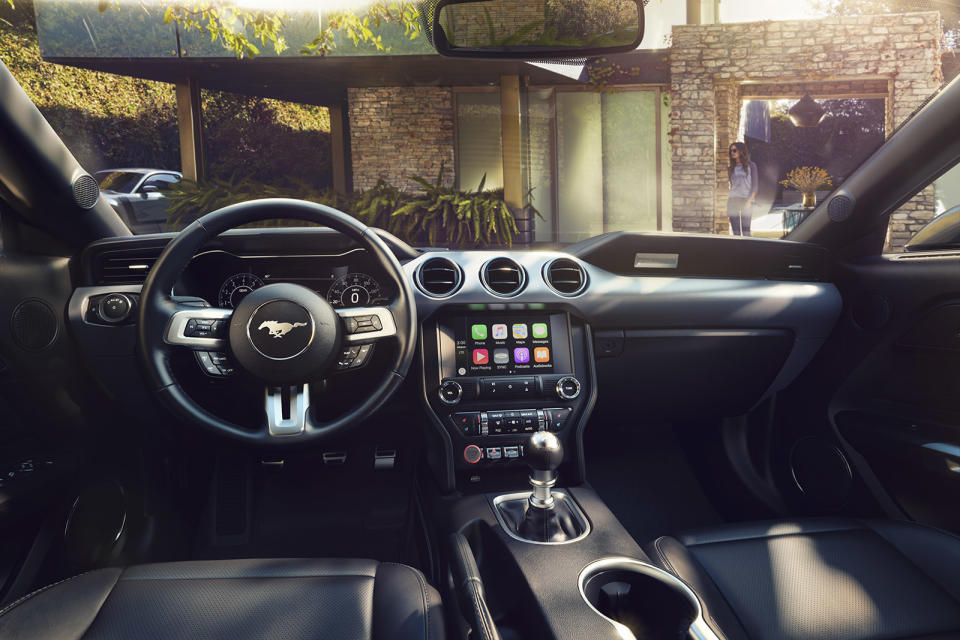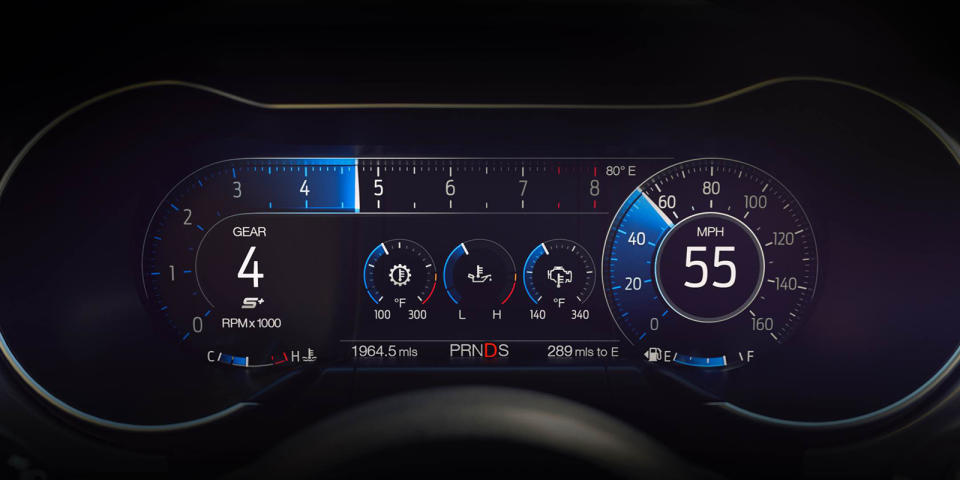The 2018 Ford Mustang Adds More Power and MagneRide Adaptive Dampers

As long as the Ford Mustang and Chevrolet Camaro remain in production, it seems the pony car wars will continue unabated. A little over a year ago, we declared the 2016 Camaro SS the champion, but with this facelifted Mustang, Ford is angling for a rematch. For 2018, the Mustang gets all sorts of changes that could add up to a big improvement.
The most significant upgrade for the 2018 Mustang is MagneRide magnetorheological adaptive dampers, available on both the EcoBoost and GT Performance Packs. Previously, the only Mustang to offer magnetically-controlled active dampers was the top-of-the-line Shelby GT350. Given the wonders that magnetic dampers work in other high-performance settings (we're looking at you, Corvette and Camaro), they should bring big handling improvements to the 2018 Mustang. Starting in 2018, the Performance Package will be available on automatic and/or convertible Mustangs, a change from the previous manual-and-hardtop-only requirements.

As predicted, the six-cylinder Mustang is officially dead for 2018. Both the 2.3-liter EcoBoost four-cylinder and 5.0-liter V8 get increases in horsepower and torque, though Ford hasn't yet specified power output for the updated 'Stang.
For 2018, the Mustang GT's 5.0-liter V8 gets both both port and direct fuel injection, similar to the fuel system found in the 3.5-liter V6 in the new F-150 Raptor. This dual-injection system allows Ford to increase the V8's compression ratio from 11.0:1 to 12.0:1, which should aid power and fuel efficiency.

As you'd expect, you can pair either engine with a six-speed manual transmission (which gets a twin-disc clutch and a new dual-mass flywheel on V8 models), but a new option for 2018 is Ford's 10-speed automatic. Co-developed with GM, this transmission promises much quicker shifting, and can handle more torque than the outgoing six-speed auto. We were very impressed with this gearbox in the new F-150 Raptor and Chevrolet Camaro ZL1, so we expect it will do nicely in the Mustang.
[contentlinks align="left" textonly="false" numbered="false" headline="Related%20Story" customtitles="Check%20Out%20Every%20Angle%20of%20the%202018%20Ford%20Mustang" customimages="" content="gallery.6909"]
The GT Performance Package will also get Michelin's new Pilot Sport 4S tires, while the EcoBoost Performance Package sticks with Pirelli P Zeroes.
New Active Valve Performance Exhaust sounds sweet! #Mustang pic.twitter.com/yR4Wp0uuF6
- Dan Jones (@D4N_J0NE5) January 17, 2017
Also new for 2018 Mustang GTs is an optional active exhaust that lets drivers increase or decrease engine volume to their heart's content. The Shelby GT350 already offers a similar switchable exhaust, as does the Camaro SS.

The most obvious changes to the Mustang are in the looks department. Ford lowered the hood by around 20mm, creating an edgier, more aggressive front fascia design. Around back, there's a new lower rear diffuser, along with a new decklid wing on Performance Package models.
The interior is mostly the same as before, save for a new, 12-inch digital gauge cluster replacing the traditional analog speedometer and tachometer. We got a brief preview of the system at Ford's Dearborn, Mich. headquarters. It's a lot like Audi's all-digital instrument panel, with numerous configurable modes and display patterns-and a drag racing mode that displays an NHRA-style starting light "christmas tree" for practicing your launches.

How does it all stack up? We won't have the chance to drive the updated Mustang for another few months, but a Ford engineer told us that the GT Performance Pack with MagneRide is better than the beloved 2012-2013 Mustang Boss 302. So consider our expectations high.
We can't wait for a Camaro vs. Mustang rematch.
You Might Also Like

